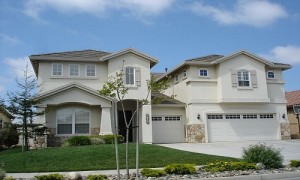Difference Between Upper Middle Class and Lower Middle Class
Introduction
“Middle class” is defined as the socioeconomic class comprising of people more prosperous economically, spiritually, and culturally than the lower class but economically less wealthy than the upper class (Capitalists and politicians). According to Max Weber (1864-1920), middle class is the group of people that lie at the middle of social hierarchy in between the upper class and the working class. Generally speaking, a household is considered as belonging to middle class if the household’s one-third of income is meant for discretionary spending. The terms upper and lower middle class are sociological concepts referring to people belonging at upper and lower stratus respectively of the middle class segment of a given society at a given point of time. The division between upper and lower middle class is clearly visible in every society, whether of a developed or a developing country. This article is an attempt to throw light on some of the important differences between upper and lower middle class. Since the terms are subjective and might have different connotations for different societies, attempt has been made to present a generalized view of the terms.
Differences
Definition: According to Max Weber, the renowned sociologist, upper middle class consists of people with advanced educational degrees and occupied in white collar jobs or self-controlled professions. Such people not only have above average personal income and educational qualification but enjoy a greater degree of autonomy in the workplace. Most of the upper middle class households own property.
According to Dennis Gilbert, celebrated sociologist, lower middle class is comprised of people such as craftsmen and semiprofessionals with roughly average income and some college education. In the social hierarchy, lower middle class is just above the lower class or poor class.
Educational level: People belonging to upper middle class generally have graduate degrees, while some have professional or specialized qualifications or skills. In developing countries, many upper middle class people have degrees from US, Canada, UK, and other foreign universities.
Most of the lower middle class people either have none or some college education. A number of lower middle class people are seen to abandon school to make a living through distress jobs or small trading.
Family size: Average family size of lower middle class households is generally bigger as compared to upper middle class families. One important reason for such a difference is the practice of early marriage among the lower middle class people.
Nature of work: The occupations of upper middle class people are intellectual, creative, instructive, or administrative in nature, which confers greater degrees of autonomy. People from lower middle class are engaged in such jobs, which are less creative, repetitive, and monitored, and, hence, lesser autonomy in work.
Philosophy: People belonging to the upper middle class are generally liberal and to some extent progressive in regard to religion, human rights, rights of women, rights and duties of the state, and other social thoughts. Intercaste and interreligious marriages are generally accepted by upper middle class people. People belonging to lower middle class are generally conservative and less supportive of progressive thoughts.
Culture: In all the aspects of cultural spectrum, namely music, poetry, literature, art, and drama, the presence of people from upper middle class is a common scenario in all the societies. Participation of people from lower middle class is negligible in such domains.
Politics: People from upper middle class enjoy more political power as compared to people from lower middle class. In most of the countries, especially in developing countries, political and administrative authorities are in the hands of the upper middle class.
Ownership of property: A good percentage of people from upper middle class own inherited properties. A lesser percentage of people from lower middle class own inherited properties.
Participation in labor force: Participation in the labor force of people from lower middle class is much more than upper middle class people. One reason for such difference is self-employment practice among the upper middle class people.
Summary
- People from the upper middle class have above-average personal income as compared to the lower middle class people.
- Upper middle class people are generally more educated than people from the lower middle class.
- Upper middle class people enjoy greater autonomy in work as compared to lower middle class people.
- Upper middle class people are more liberal than the lower middle class people.
- Culturally, upper middle class people are more advanced as compared to the lower middle class people.
- Upper middle class enjoys greater political power than the lower middle class.
- People from the upper middle class generally own inherited properties, unlike people from the lower middle class.
- Lower middle class people have greater participation in the labor force than the upper middle class people.
- Differences between Al-Qaeda And ISIS - April 14, 2017
- Difference Between Hindu And Buddhist meditation - September 20, 2015
- Difference Between Upper Middle Class and Lower Middle Class - September 3, 2015
Search DifferenceBetween.net :
Leave a Response
References :
[0]www.edurite.com/kbase/difference-between-upper-class-and-lower-class
[1]www.voxeu.org/article/brief-history-middle-class-economics
[2]www.dictionary.reference.com/browse/middle class
[3]https://en.wikipedia.org/wiki/American_middle_class

